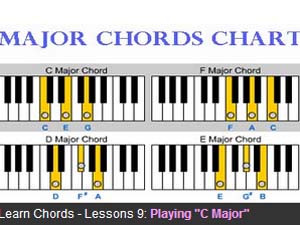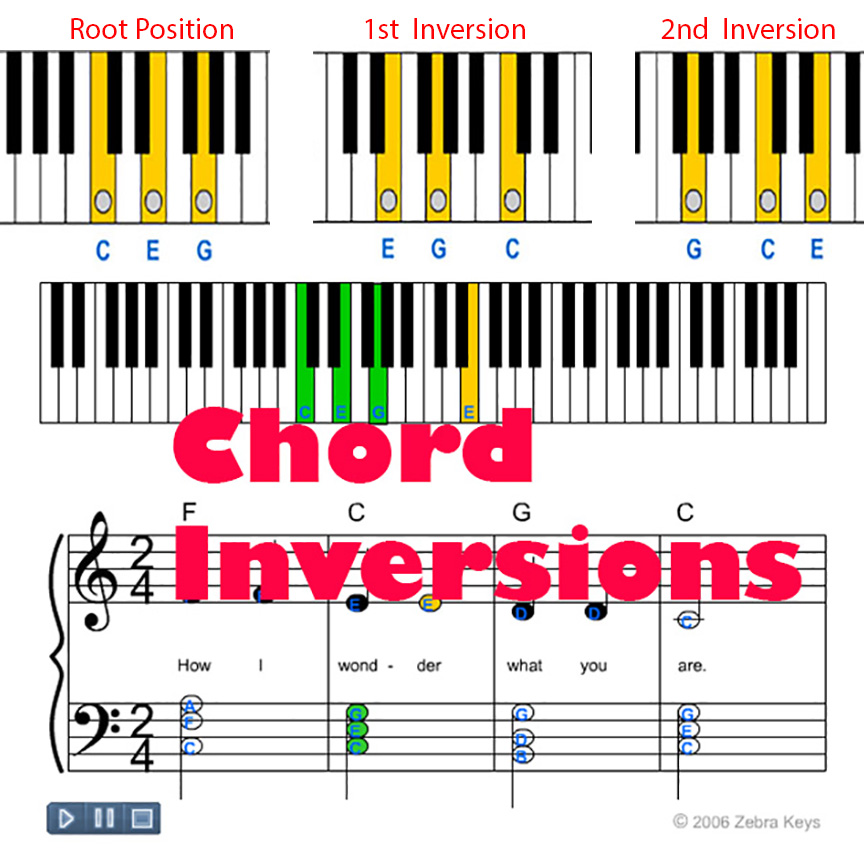
|
We often play chords in their root chord position, But sometimes we would see chords are being played in their first or second inversions. How to play inverted chords? To play C Major (M or Maj) in a Root Chord position, you’kll play: Root – 3 – 5, which is C – E – G C major chord – Root Chord position: 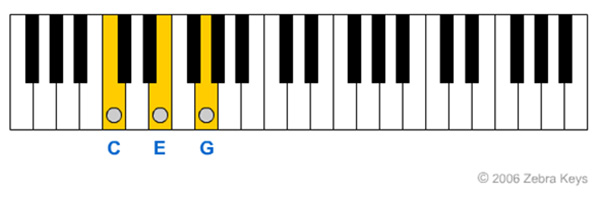 |
 |
|
If we move the C one octave higher to be above the E and G, then E-G-C is the first inversion of C Major chord, see the figures below: C major chord – 1st Inversion position: To play C Major Chord in the 1st Inversion, you will play: 3 – 5 – Root, which is E – G – C 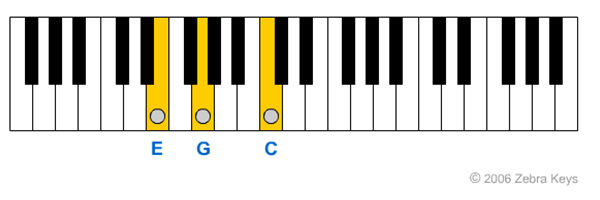 |
|
[Note: When you move the Root (C) to an octave higher – E (the original 3rd) has formed a bass, with the 5th (G) and the Root (C) stacked above E. The inverted bass of E now has intervals of a 3rd and a 6th above it (E – G – C). Click below to practice playing 1st Inversion Chord of C Major on the interactive Z-Board below: |
Access free 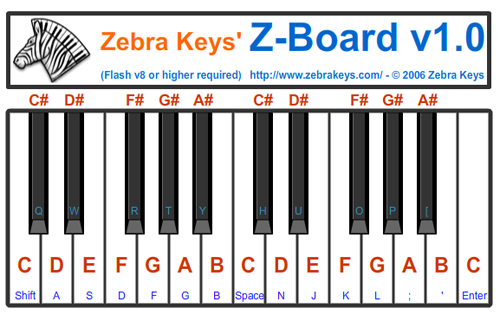 to practice this song now: How to use Z-BOARD For all users (except for those who have a non-touch screen device) – click directly on the keypad of the Z-Board to play that key. |
|
And, if we move the E one octave higher to be above the G and C, then G – C – E is the second inversion of C Major chord C major chord – 2nd Inversion position: To play C Major Chord in the 2nd Inversion, you will play: 5 – Root – 3, which is G – C – E 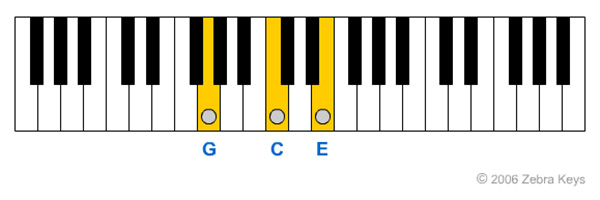 |
|
When you move the 3rd of the triad (E) up – G (the 5th) has now formed a bass, with the Root (C) and the 3rd (E) stacked above G. The inverted bass of G now has intervals of a 4th and a 6th above it (G – C – E).] |
| Access the free lesson to watch how these chord inversions can be applied into a song. You will notice that F chord played in 2nd inversion is C – F – A (instead of F – A – C), and G chord played in 1st inversion is B – D – G (instead of G – B – D) |
.
Learn for Free – Online Piano Lessons
| 1 | | | 2 | | | 3 | | | 4 | | | 5 | | | 6 |
| 7 | | | 8 | | | 9 | | | 10 | | | 11 | | | 12 |
| 13 | | | 14 | | | 15 | | | 16 | | | 17 | | | 18 |
| 19 | | | 20 | | | 21 | | | 22 | | | 23 | | | 24 thru 50 |
